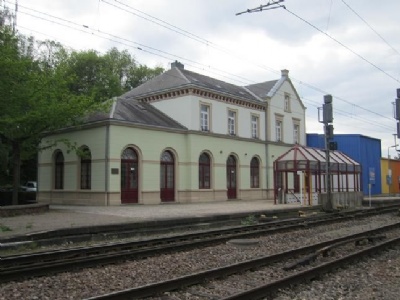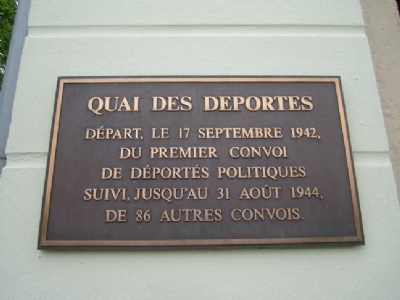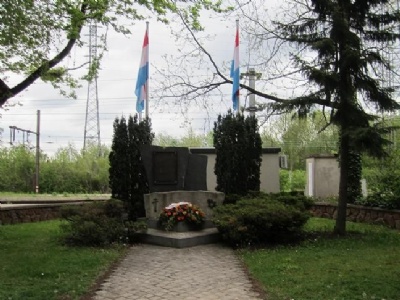Luxemburg – Hollerich
Germany attacked Luxembourg simultaneously as they attacked Belgium, Holland and France in May 1940. Unlike the other countries, Luxembourg could not offer any resistance and was immediately occupied. From May to August 1942, Luxembourg was under military occupation. But when the country was incorporated into the German empire in August 1942 (Moselland), it was placed under a civil administration. As supreme political leader (Gauleiter) Hitler appointrd Gustav Simon. The transposition meant that people living there was forced into German citizenship, even if they wished not to. By this citizen decree they were obliged to either military service or labor service. This forced obligation was met with a great resistance that resulted in protests and a general strike. Those who not volunteered were forcibly put on trains eastwards. The deportation of these departed from Hollerich station in southern Luxembourg. Altogether about 12,000 were deported eastward, mainly Germany. The majority of these were enlisted for labor. Jews were also deported from Hollerich, but the deportations were characterized by a security process that meant that they had to step on the trains a bit from the station.
Current status: Preserved with museum (2012).
Address: 3 A rue de la Déportation, 1415 Luxemburg.
Get there: Bus.
Follow up in books: Ulrich, Herbert: Hitler’s Foreign Workers: Enforced labor in Germany under the Third reich (2006).



Since Luxembourg is not associated with any major military battles or other known events, and a comparatively small Jewish population affected by the Holocaust, the collective memory of Luxembourg during the Second World War becomes limited. However, Battle of Bulge, in December 1944 and January 1945, was partly fought on Luxembourg soil, but is more known for the fighting that took place on Belgian soil.